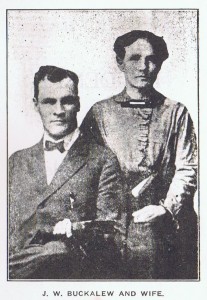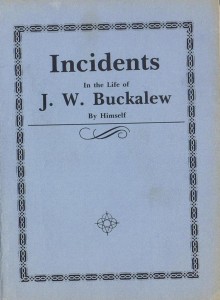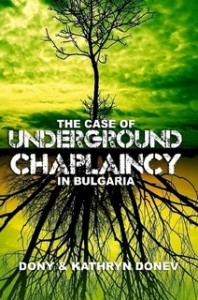2004 Prognoses about Bulgarian Churches in North America 10 Years Later
With the present rates and dynamics of immigration, the growth of Bulgarian immigrant communities across North America is inevitable. As it has experiences a great increase in the past fifteen years since the fall of the Berlin Wall, the Bulgaria immigrant community is has not only first-generation, Bulgarian-born members, but second-generation of Bulgarian Americans born in North America.
As the community and the churches within it continues to deal with the cultural dilemma, they will discover that that a new generation of immigrants will be eventually assimilated within the American culture. As North American cross-cultural dynamics in the beginning of the 21st century tend to preserve ethnic belongingness rather then assimilate it, they will perhaps present the Bulgarian American churches with an intergenerational opportunity for ministry.
Such change is a historical precedent, which demands preparation from both Bulgarian and American sides. In the past, the children of the immigrants have usually changed the ways their parents lived their lives. However, this dynamics have been reversed to a lifestyle that contains the old immigrant identity. The effect of such metamorphoses is overwhelming, since second generation immigrant must balance between the heritage of their parents and the reality of the new world in which they live.
In a religious context, the new generation is retaining or rather reinventing the old ways of worship inherited from their parents. Thus, while the secular world offers a context for assimilation, the religious community provides an atmosphere for preservation of culture. At the same time, second generation immigrants may switch to a congregation with that promotes a more American style of worship, role of women and social services. Such dynamics provide the context and reasons for church splits.
In their short modern history of the 1990s, the American Bulgarian churches have already experienced a number church splits. Some of the congregations have experienced even more than one split. Such experiences have been painful, but at the same time have brought sense to the reality of church dynamics and have sources of learning for both pastors of congregations. As the Bulgarian American churches grow in number and influence, the second generation immigrants take a more significant role in the church’s life and dynamics. In such context, programs for identity formation and church split prevention must become the focus of the church’s discipleship process.
Annual Conferences of Bulgarian Churches in America
 In the summer of 2002 the pastors of the Bulgarian churches in North America came together for their first meeting in Dallas, TX. As a result, an organization called the Alliance of the Bulgarian Evangelical Churches in North America was established as a first step toward networking between the churches. The churches within the Alliance has met over Memorial Day weekend every year since then as follows:
In the summer of 2002 the pastors of the Bulgarian churches in North America came together for their first meeting in Dallas, TX. As a result, an organization called the Alliance of the Bulgarian Evangelical Churches in North America was established as a first step toward networking between the churches. The churches within the Alliance has met over Memorial Day weekend every year since then as follows:
2002 – Dallas
2003 – Chicago
2004 – Minneapolis
2005 – Los Angeles
2006 – Dallas
2007 – Chicago
2008 – Minneapolis
2009 – Los Angeles
2010 – Houston
2011 – Las Vegas
2012 – Chicago
2013 – Dallas
2014 – Minneapolis
2015 – Las Vegas
2016 – Houston
2017 – Chicago
READ ALSO:
- The story of the first Bulgarian Church of God in the Untied States
- San Francisco Springs
- Prognoses about Bulgarian Churches in North America
San Francisco Springs: A Story of Two Churches
 Several years ago, while visiting San Francisco on our way to preach at the Bulgarian church in Las Vegas, we were completing our research on Ivan Voronaev’s biography at Berkeley, who studied there after his arrival to the States in the 1912.
Several years ago, while visiting San Francisco on our way to preach at the Bulgarian church in Las Vegas, we were completing our research on Ivan Voronaev’s biography at Berkeley, who studied there after his arrival to the States in the 1912.
While there, we decided to call a high school friend who lives and works in the area. He had moved to the States in 1998 while I was working in D.C. We tried to keep in touch since then, but I had not seen him for years. And with all our travels it had never worked out to cross paths.
So early one morning that same week, we were having coffee at Starbucks near San Rafael. He shared some of his experience as an immigrant, about his family spread thin between here and Bulgaria and about his brother who had just moved for work to Phoenix.
I’ve already written about these events with more detail in “Finding Friends in Phoenix or the Story of an Arizona State Quarter”. In short, this is how the idea for twin Bulgarian churches in San Francisco and Phoenix was born in the spring of 2009.
Today, when this dream of two churches is so close to become a reality, I look at this rather incidental and spontaneous meeting and wonder. If God can bring two old friends to start two new churches, what else does He have stored for us in the future?
J.W. Buckalew “Rough and Ready”
Comments Off on J.W. Buckalew “Rough and Ready”

 “Like a Mighty Army,” by Dr. Charles W. Conn: “He was then forty years of age, a swarthy, hulking man with stooped shoulders and unusually long arms. Yet, when Buckalew took the pulpit he was a complete master, and one of the most effective evangelists in Pentecostal history, who had great revivals and established sound churches with his roughshod preaching. During the day he picked cotton and did some other migrant work in order to support his family, and at night he preached the gospel.”The preface indicates the purpose for penning the memoir: “I have noticed that the lives and testimonies of men and women who have been saved from lives of sin in its deepest hue have been a channel through which the Lord touched the hearts of scores of people, and with this idea in view this book has been written. As the divine blessings has come to the author he is desirous of passing it on to others through the pages of this book. May the Lord send it forth and make it blessing to many tired sin-sick souls. Amen.”
“Like a Mighty Army,” by Dr. Charles W. Conn: “He was then forty years of age, a swarthy, hulking man with stooped shoulders and unusually long arms. Yet, when Buckalew took the pulpit he was a complete master, and one of the most effective evangelists in Pentecostal history, who had great revivals and established sound churches with his roughshod preaching. During the day he picked cotton and did some other migrant work in order to support his family, and at night he preached the gospel.”The preface indicates the purpose for penning the memoir: “I have noticed that the lives and testimonies of men and women who have been saved from lives of sin in its deepest hue have been a channel through which the Lord touched the hearts of scores of people, and with this idea in view this book has been written. As the divine blessings has come to the author he is desirous of passing it on to others through the pages of this book. May the Lord send it forth and make it blessing to many tired sin-sick souls. Amen.”
Revival at Kinser Church of God
![Kinser-Church-of-God-REVIVAL[1]](https://cupandcross.com/wp-content/uploads/2014/05/Kinser-Church-of-God-REVIVAL1.png)
Movement with a Message
![51DUWeyraBL._SY344_PJlook-inside-v2,TopRight,1,0_SH20_BO1,204,203,200_[1]](https://cupandcross.com/wp-content/uploads/2014/04/51DUWeyraBL._SY344_PJlook-inside-v2TopRight10_SH20_BO1204203200_1.jpg) It is an indisputable fact that the Pentecostal movement has experienced tremendous growth in the twentieth century. Very similar to the ministry of John the Baptist, the message of Pentecost has drawn crowds to the small mountain churches where in contrast to the rather primitive theo-praxis the power of God has been evident.
It is an indisputable fact that the Pentecostal movement has experienced tremendous growth in the twentieth century. Very similar to the ministry of John the Baptist, the message of Pentecost has drawn crowds to the small mountain churches where in contrast to the rather primitive theo-praxis the power of God has been evident.
Similar to the ministry of John, the powerful results of Pentecostalism are produced by preaching that may seem unreasonable. For Pentecostals, however, it is words of life. It is obedience to the Great Commission of Christ to preach the gospel to all due to determination deriving from realized eschatology of the already-not-yet Kingdom of Heaven. The reality of the message then becomes a reality of the Pentecostal community in which the believer lives and witnesses even to the point of martyrdom. What seems to be an unreasonable message to the world becomes the identity of the Pentecostal community.
A loss of the message then means a loss of identity. In order to protect its identity Pentecostalism strives to deliver the message and experience to the generations to come, forming a genuine Pentecostal catechesis. This is much similar to the educational strategy of John the Baptist and his discipleship formation. The restoration and reclamation of the past heritage moves toward preservation of the experience and message. The context of technological and scientific progress, affects the development of the Pentecostal movement transforming its original primitive purpose, theology and practices. The only way to preserve the power of Pentecostalism then is through preservation of its primitivism.
New Develpoments in the Master’s Degree of Chaplaincy Ministry in Bulgaria
 The Master’s Degree of Chaplaincy Ministry in Bulgaria was:
The Master’s Degree of Chaplaincy Ministry in Bulgaria was:
- Upgraded to the necessary educational and professional levels, applicable to the specific context of ministry in Bulgaria (December 2010)
- Presented in its upgraded form for approval before the educational board of BETI in 2011 (January 2011)
- Applied in its full capacity with the remaining modules in Theology (Spring 2011), Counseling (Fall 2011) and Master’s Thesis (exp. 2012)
- Transferred to the New Bulgarian University in Sofia under their new social worker studies program.
- Chaplaincy Conference and Master’s of Chaplaincy
- Chaplaincy Course in Yambol, BULGARIA
- Bulgarian Chaplaincy Association Annual Meeting
- Family Seminar for Military Men and Women
- Cup & Cross Ministries in Church of God Publications
- The Case of a NATO Chaplaincy Model within the Bulgarian Army
- 10 Years of Military Ministry in Bulgaria
- Bulgarian Chaplaincy Associations Recognized by U.S. Department of State
- National Chaplaincy Conference
- Bulgarian Chaplaincy Association Gains Legal Status
- Chaplain Dees Visits Bulgaria
- Chaplaincy Course at the Bulgarian Evangelical Theological Institute
- Bulgarian Chaplaincy Association
- Meeting the NATO Chaplain
- National Chaplaincy Meeting
- Chaplaincy Developments in Bulgaria
- U.S. Bases in Bulgaria
- National Chaplaincy Meeting
- Chaplaincy in Bulgaria
- HEALTHCARE CHAPLAINCY IN BULGARIA
- Chaplaincy in Bulgaria
- Mission Bulgaria







